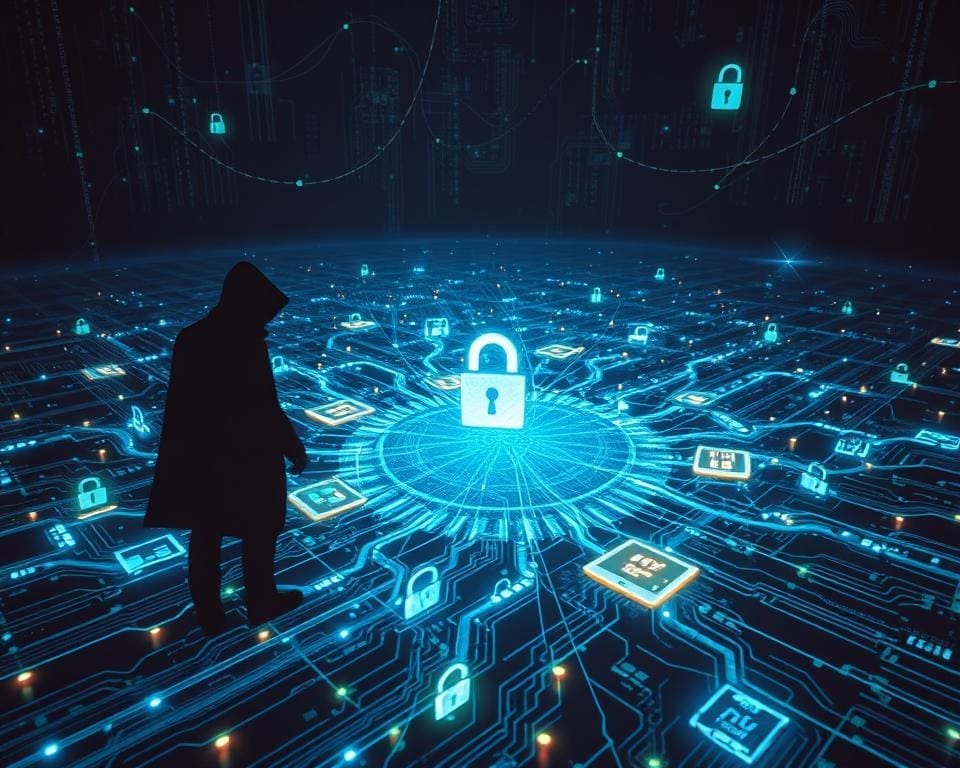In today’s rapidly evolving digital landscape, the significance of cybersecurity cannot be overstated. As we increasingly engage with technology in our daily lives, we also expose ourselves to potential threats. Protecting yourself in a digital world begins with a comprehensive understanding of the risks inherent in online interactions. According to the UK Government Cyber Security Breaches Survey 2023, a staggering 39% of UK businesses reported encountering a cyber breach or attack within the past year, illuminating the urgent need for heightened awareness regarding online security.
As we delve into the complexities of cyber threats, it becomes clear that vigilance is crucial for both individuals and organisations. The landscape is continuously shifting, demanding that we not only stay informed about potential dangers but also adopt proactive measures to fortify our digital identities. By prioritising cybersecurity, we empower ourselves to navigate the digital realm with confidence.
The Importance of Cybersecurity in Today’s Digital Landscape
In an era where virtually every aspect of life intertwines with technology, understanding the landscape of cyber threats has never been more crucial. Individuals and organisations face an array of potential dangers, which can range from malware infections to sophisticated phishing schemes. Recognising these threats enables everyone to take proactive steps toward enhancing digital privacy and ensuring internet safety.
Understanding Cyber Threats
Cyber threats manifest in numerous ways, posing significant risks that can compromise both personal and corporate data. Some of the most common forms include:
- Malware: Malicious software designed to damage or exploit systems.
- Phishing: Fraudulent attempts to obtain sensitive information, frequently via deceptive emails.
- Man-in-the-Middle Attacks: Interceptions of communication between two parties, potentially leading to data breaches.
- DDoS Attacks: Overwhelming a system, making it unavailable to users.
Recent reports highlight a staggering rise in phishing attempts, with increases exceeding 100% in the past year alone. These alarming statistics illustrate the pressing need for comprehensive understanding and action against such cyber threats.
Why Every Individual Needs to Care About Cybersecurity
The increasing frequency of online interactions and transactions highlights the importance of personal accountability in cybersecurity. While IT professionals play a critical role, each individual must assume responsibility for their online safety. By being vigilant, everyone can protect not just their digital privacy but that of their families and communities as well.
Public awareness initiatives, such as those led by the National Cyber Security Centre (NCSC), aim to cultivate a culture of cybersecurity through education and resources. These programs are fundamental in empowering individuals to recognise potential cyber threats and adopt preventative measures that enhance internet safety.

Cybersecurity: Protecting Yourself in a Digital World
In an era where our lives are increasingly conducted online, the need for personal cybersecurity has never been more vital. Shielding oneself from cyber threats requires a proactive approach. Understanding effective strategies can significantly enhance your online security and safeguard your digital identity.
Key Strategies for Personal Cybersecurity
Implementing robust practices can drastically reduce the risk of falling victim to cyberattacks. Consider the following strategies:
- Adopt Strong Password Practices: Use complex, unique passwords for different accounts. A password manager can help in managing these effectively.
- Enable Multi-Factor Authentication: This adds an extra layer of security by requiring more than just a password to access your accounts.
- Regularly Update Software: Keeping your devices and applications updated ensures that known vulnerabilities are patched, thus protecting your online security.
Safeguarding Your Digital Identity
Your digital identity reflects the personal information and data you share online. Being vigilant about what you post can help in maintaining privacy. Be mindful of oversharing and consider the potential risks associated with social media platforms. Tools such as Have I Been Pwned can be instrumental in checking if your email accounts have been compromised in data breaches. This proactive measure enhances awareness and contributes to personal cybersecurity.
Essential Tips for Secure Browsing
In today’s digital environment, ensuring safe online experiences is vital. Implementing effective strategies such as creating strong passwords and recognising phishing scams can significantly improve secure browsing. These tips not only protect personal information but also contribute to a safer internet landscape.
Using Strong Passwords and Authentication Measures
Creating strong passwords serves as the first line of defence against unauthorised access. A strong password typically includes a mix of uppercase letters, lowercase letters, numbers, and special characters. Using a password manager simplifies this process, securely storing and generating complex passwords for various accounts.
Implementing additional authentication measures enhances security further. Techniques like biometric identification or one-time codes add layers of protection, making it harder for cybercriminals to breach accounts, thus ensuring secure browsing habits.
Avoiding Phishing Scams and Malicious Links
Phishing scams have become increasingly sophisticated, targeting unsuspecting users. Awareness is key to identifying these threats. Users should scrutinise emails and messages, looking for unusual language or requests for sensitive information. It is always wise to hover over links before clicking, verifying their authenticity.
The British Cyber Trust initiative provides valuable resources for recognising and avoiding phishing attempts, thereby fostering a safer online environment. Staying informed and vigilant helps individuals maintain better secure browsing practices and protect their digital identities.
Data Protection: How to Keep Your Information Safe
In an era where data breaches and cyber threats are commonplace, understanding data protection methods is essential for both individuals and organisations. Implementing effective data encryption strategies serves as a cornerstone for maintaining the confidentiality of sensitive information. Adhering to best practices greatly enhances your data security posture and reduces the risk of unauthorised access.
Understanding Data Encryption
Data encryption transforms plaintext information into a coded format, rendering it unreadable without the appropriate decryption key. This method acts as a robust barrier against cyber criminals, ensuring that even if data is intercepted, it remains protected. Various technologies and protocols are available, enabling individuals and organisations to choose solutions that best fit their needs. Regularly reviewing and updating encryption methods is imperative to stay ahead of evolving threats.
Best Practices for Backing Up Data
Regular data backups play a pivotal role in safeguarding information against potential loss, whether due to cyber attacks, hardware failures, or natural disasters. Utilising a combination of cloud storage solutions and traditional backup methods offers a comprehensive approach to data protection. Consider the following best practices for effective data backup:
- Maintain multiple backup copies using both online and offline methods.
- Schedule regular backups to ensure that recent data is always secured.
- Test recovery processes periodically to verify that data restoration is feasible.
- Encrypt backup files to add an extra layer of security.
Enhancing Your Internet Safety at Home
In today’s interconnected world, promoting internet safety within your home is essential to sustaining robust home cybersecurity. Start by ensuring that your home Wi-Fi network is secure. Changing default passwords and using strong, unique passphrases adds a significant layer of protection, preventing unauthorised access to your devices. Additionally, enabling firewall protection on your router can effectively shield your network from external threats, reinforcing your online security.
Another critical step in bolstering internet safety is to change the default settings on your internet-enabled devices. This simple adjustment can close vulnerabilities that cybercriminals often exploit. Furthermore, educating family members, especially children, about online safety is vital in cultivating a culture of cybersecurity at home. Teaching the importance of recognising suspicious emails, avoiding clicking on dubious links, and understanding privacy settings will empower them to navigate the online world more securely.
Lastly, keeping the firmware of all connected devices up to date is a fundamental practice emphasised by the National Cyber Security Centre (NCSC). Regular updates not only enhance device performance but also patch known vulnerabilities that could be targets for hackers. By adopting these proactive measures, you can significantly enhance your home’s internet safety and ensure a more secure online environment for your entire family.









